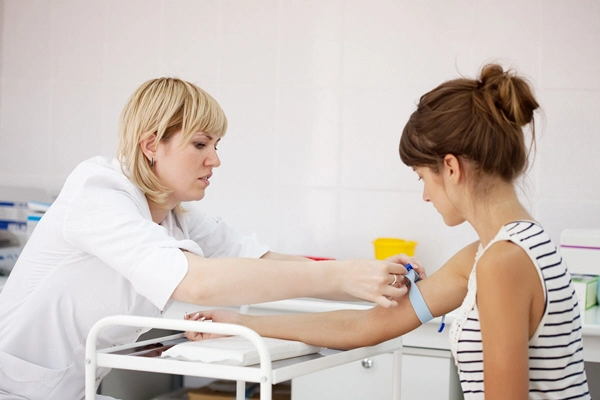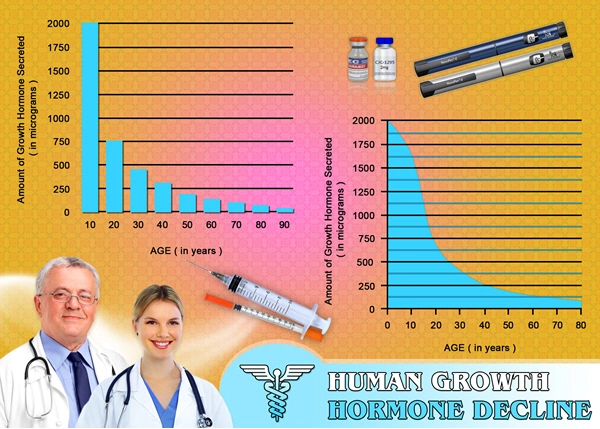Introduction to Rowing and Back Injuries
Rowing, a sport that combines strength, endurance, and technique, has gained immense popularity among American males. However, the repetitive nature of rowing can predispose athletes to back injuries, particularly in the lower back region. This article delves into innovative sports medicine techniques tailored to prevent and manage back injuries among male rowers in the United States.
Understanding the Biomechanics of Rowing
The rowing stroke involves a complex sequence of movements that places significant stress on the spine. During the drive phase, rowers exert force through their legs, which is then transferred through the back and arms. This repetitive motion can lead to muscle imbalances and strain on the lumbar spine. Understanding these biomechanics is crucial for developing effective injury prevention strategies.
Core Strengthening: The Foundation of Injury Prevention
A strong core is essential for maintaining proper posture and reducing the load on the spine during rowing. Sports medicine professionals recommend a regimen of core-strengthening exercises, such as planks, Russian twists, and bird dogs. These exercises enhance the stability of the trunk, thereby minimizing the risk of back injuries. American male rowers should incorporate these exercises into their daily training routine to build a robust core foundation.
Flexibility and Mobility Training
Flexibility and mobility are equally important in preventing back injuries. Tight muscles, particularly in the hamstrings and hip flexors, can alter the rowing stroke and increase the strain on the lower back. Sports medicine experts advocate for regular stretching and mobility drills, such as the pigeon stretch and dynamic leg swings. These practices help maintain optimal muscle length and joint range of motion, crucial for injury prevention in rowers.
Ergonomic Adjustments to Rowing Equipment
The design and adjustment of rowing equipment play a pivotal role in injury prevention. Sports medicine specialists often work with coaches to ensure that rowing machines and boats are ergonomically optimized for each athlete. Proper seat height, foot stretcher angle, and oar length can significantly reduce the stress on the back. American male rowers should undergo regular equipment assessments to ensure their setup aligns with their biomechanical needs.
Technique Refinement and Coaching
Proper rowing technique is fundamental to preventing back injuries. Sports medicine professionals collaborate with rowing coaches to refine athletes' techniques, focusing on maintaining a neutral spine throughout the stroke. Video analysis and real-time feedback are invaluable tools in this process. By emphasizing technique, rowers can minimize unnecessary strain on their backs and enhance their overall performance.
Injury Management and Rehabilitation
Despite preventive measures, back injuries may still occur. When they do, prompt and effective management is crucial. Sports medicine practitioners employ a multidisciplinary approach, combining physical therapy, chiropractic care, and, if necessary, pharmacological interventions. Rehabilitation programs are tailored to the specific injury, focusing on restoring strength, flexibility, and proper biomechanics. American male rowers should seek specialized care to ensure a swift and complete recovery.
The Role of Nutrition and Hydration
Nutrition and hydration are often overlooked aspects of injury prevention. A diet rich in anti-inflammatory foods, such as omega-3 fatty acids and antioxidants, can help reduce inflammation and support muscle recovery. Adequate hydration is also essential, as dehydration can lead to muscle cramps and decreased performance. Sports medicine experts recommend a balanced diet and proper hydration strategies to support the overall health and resilience of American male rowers.
Conclusion: A Holistic Approach to Injury Prevention
Preventing back injuries in American male rowers requires a holistic approach that encompasses core strengthening, flexibility training, ergonomic adjustments, technique refinement, and proper nutrition. By integrating these sports medicine techniques into their training regimen, rowers can safeguard their backs and enhance their performance on the water. As the sport continues to evolve, so too must the strategies to protect its athletes, ensuring that rowing remains a safe and enjoyable pursuit for all.

- Effective Sports Medicine Strategies for Preventing Ankle Injuries in Male Volleyball Players [Last Updated On: February 17th, 2025] [Originally Added On: February 17th, 2025]
- Sports Medicine Advances Aid American Male Rowers with Lower Back Pain [Last Updated On: March 18th, 2025] [Originally Added On: March 18th, 2025]
- Snowboarding Wrist Injuries: Mechanisms, Prevention, and Rehabilitation Strategies [Last Updated On: March 18th, 2025] [Originally Added On: March 18th, 2025]
- Hamstring Injuries in Sprinters: Sports Medicine Approach and Rehabilitation Strategies [Last Updated On: March 19th, 2025] [Originally Added On: March 19th, 2025]
- Sports Medicine's Vital Role in Enhancing American Male Triathletes' Health and Performance [Last Updated On: March 19th, 2025] [Originally Added On: March 19th, 2025]
- Sports Medicine's Role in Preventing Overuse Injuries for American Male Climbers [Last Updated On: March 19th, 2025] [Originally Added On: March 19th, 2025]
- Sports Medicine Strategies for Recovery in American Male Martial Artists [Last Updated On: March 19th, 2025] [Originally Added On: March 19th, 2025]
- Sports Medicine Revolutionizes Training for American Male CrossFit Athletes [Last Updated On: March 20th, 2025] [Originally Added On: March 20th, 2025]
- BMX Riding Risks and the Crucial Role of Sports Medicine for American Males [Last Updated On: March 20th, 2025] [Originally Added On: March 20th, 2025]
- Sports Medicine Enhances Performance and Health in American Male Water Polo Players [Last Updated On: March 20th, 2025] [Originally Added On: March 20th, 2025]
- Sports Medicine Enhances Performance and Safety for American Male Figure Skaters [Last Updated On: March 21st, 2025] [Originally Added On: March 21st, 2025]
- Knee Health Strategies for American Male Ultimate Frisbee Players: Prevention and Recovery [Last Updated On: March 21st, 2025] [Originally Added On: March 21st, 2025]
- Sports Medicine's Impact on Surfing Injuries in American Males: Prevention and Treatment [Last Updated On: March 21st, 2025] [Originally Added On: March 21st, 2025]
- Sports Medicine's Role in Enhancing Polo Performance and Health for American Males [Last Updated On: March 23rd, 2025] [Originally Added On: March 23rd, 2025]
- Sports Medicine's Role in Enhancing Performance and Injury Management for American Male Swimmers [Last Updated On: March 24th, 2025] [Originally Added On: March 24th, 2025]
- Sports Medicine Enhances Career Longevity for American Male Badminton Players [Last Updated On: March 24th, 2025] [Originally Added On: March 24th, 2025]
- Ankle Health Strategies for American Male Beach Volleyball Players [Last Updated On: March 24th, 2025] [Originally Added On: March 24th, 2025]
- Managing Rotator Cuff Injuries in American Male Swimmers: A Sports Medicine Approach [Last Updated On: March 24th, 2025] [Originally Added On: March 24th, 2025]
- Muscle Health Strategies for American Male Speed Skaters: A Holistic Approach [Last Updated On: March 24th, 2025] [Originally Added On: March 24th, 2025]
- Sports Medicine: Enhancing Performance and Health in American Male Track and Field Athletes [Last Updated On: March 24th, 2025] [Originally Added On: March 24th, 2025]
- Preventing Shoulder Injuries in Lacrosse Goalies: A Sports Medicine Approach [Last Updated On: March 25th, 2025] [Originally Added On: March 25th, 2025]
- Ankle Health Strategies for American Male Basketball Point Guards [Last Updated On: March 25th, 2025] [Originally Added On: March 25th, 2025]
- Sports Medicine Advances Enhance Injury Management for American Male Field Hockey Players [Last Updated On: March 25th, 2025] [Originally Added On: March 25th, 2025]
- Sports Medicine Enhances Performance and Safety in Trampoline Gymnastics for American Males [Last Updated On: March 25th, 2025] [Originally Added On: March 25th, 2025]
- Sports Medicine Enhances Performance and Longevity in American Male Fencers [Last Updated On: March 25th, 2025] [Originally Added On: March 25th, 2025]
- Sports Medicine's Vital Role in Enhancing Rugby Sevens Performance and Safety [Last Updated On: March 25th, 2025] [Originally Added On: March 25th, 2025]
- Sports Medicine: Essential for American Male Rugby Forwards' Health and Performance [Last Updated On: March 25th, 2025] [Originally Added On: March 25th, 2025]
- Sports Medicine Advances Extend Baseball Pitchers' Careers [Last Updated On: March 25th, 2025] [Originally Added On: March 25th, 2025]
- Advancements in Sports Medicine Aid Hip Recovery in American Male Track Cyclists [Last Updated On: March 26th, 2025] [Originally Added On: March 26th, 2025]
- Sports Medicine: Enhancing Performance and Health in American Male Table Tennis Players [Last Updated On: March 26th, 2025] [Originally Added On: March 26th, 2025]
- Optimizing Recovery for American Male Soccer Goalkeepers: Physical and Mental Strategies [Last Updated On: March 26th, 2025] [Originally Added On: March 26th, 2025]
- Preventing Stress Fractures in Male Runners: Sports Medicine's Multifaceted Approach [Last Updated On: March 26th, 2025] [Originally Added On: March 26th, 2025]
- Sports Medicine's Role in Enhancing American Male Volleyball Players' Performance and Health [Last Updated On: March 26th, 2025] [Originally Added On: March 26th, 2025]
- Sports Medicine Boosts Career Longevity for American Male Baseball Outfielders [Last Updated On: March 26th, 2025] [Originally Added On: March 26th, 2025]
- Optimizing Recovery for Football Wide Receivers: A Sports Medicine Approach [Last Updated On: March 26th, 2025] [Originally Added On: March 26th, 2025]
- Sports Medicine Revolutionizes Training and Recovery in American Male Handball [Last Updated On: March 26th, 2025] [Originally Added On: March 26th, 2025]
- Preventing Hamstring Injuries in American Male Soccer Midfielders: A Comprehensive Guide [Last Updated On: March 26th, 2025] [Originally Added On: March 26th, 2025]
- Lacrosse Midfielders' Hip Injuries: Sports Medicine's Role in Prevention and Treatment [Last Updated On: March 27th, 2025] [Originally Added On: March 27th, 2025]
- Sports Medicine's Vital Role in Recovery for American Male Soccer Defenders [Last Updated On: March 27th, 2025] [Originally Added On: March 27th, 2025]
- Sports Medicine Advances Enhancing Recovery in American Male Ice Hockey Players [Last Updated On: March 27th, 2025] [Originally Added On: March 27th, 2025]
- Tendonitis in American Male Tennis Players: Diagnosis, Treatment, and Prevention Strategies [Last Updated On: March 27th, 2025] [Originally Added On: March 27th, 2025]
- Managing Groin Injuries in American Male Hockey Players: Strategies and Treatments [Last Updated On: March 27th, 2025] [Originally Added On: March 27th, 2025]
- Sports Medicine Revolutionizes Training for American Male Cyclists [Last Updated On: March 28th, 2025] [Originally Added On: March 28th, 2025]
- Sports Medicine's Role in Enhancing Basketball Forwards' Performance and Health [Last Updated On: March 28th, 2025] [Originally Added On: March 28th, 2025]
- Optimizing Recovery for American Male Soccer Forwards: A Sports Medicine Approach [Last Updated On: March 28th, 2025] [Originally Added On: March 28th, 2025]
- Cross-Country Skiing: Knee Health Risks and Prevention Strategies for American Males [Last Updated On: March 28th, 2025] [Originally Added On: March 28th, 2025]
- Lacrosse Shoulder Injuries: Prevention, Treatment, and Sports Medicine Advances [Last Updated On: March 28th, 2025] [Originally Added On: March 28th, 2025]
- Sports Medicine's Role in Preventing Shin Splints in American Male Runners [Last Updated On: March 28th, 2025] [Originally Added On: March 28th, 2025]
- Preventing Achilles Tendon Injuries in Runners: The Role of Sports Medicine [Last Updated On: March 29th, 2025] [Originally Added On: March 29th, 2025]
- Sports Medicine Revolutionizes Performance and Health in American Male Cycling [Last Updated On: March 30th, 2025] [Originally Added On: March 30th, 2025]
- Knee Health Essentials for American Football Running Backs: Prevention and Recovery Strategies [Last Updated On: March 30th, 2025] [Originally Added On: March 30th, 2025]
- Sports Medicine's Role in Enhancing American Male Swimmers' Performance and Recovery [Last Updated On: March 30th, 2025] [Originally Added On: March 30th, 2025]
- Cross-Country Skiing: Knee Health Strategies for American Male Skiers [Last Updated On: April 3rd, 2025] [Originally Added On: April 3rd, 2025]
- Sports Medicine's Role in Enhancing American Male Volleyball Players' Performance and Health [Last Updated On: April 3rd, 2025] [Originally Added On: April 3rd, 2025]
- Sports Medicine Revolutionizes Performance and Recovery in American Male Track and Field [Last Updated On: April 4th, 2025] [Originally Added On: April 4th, 2025]
- Sports Medicine: Enhancing Health and Performance in American Male Basketball Forwards [Last Updated On: April 6th, 2025] [Originally Added On: April 6th, 2025]
- Managing Groin Injuries in Hockey: Prevention, Treatment, and Rehabilitation Strategies [Last Updated On: April 6th, 2025] [Originally Added On: April 6th, 2025]
- Sports Medicine: Enhancing Rugby Forwards' Performance and Health in the U.S. [Last Updated On: April 6th, 2025] [Originally Added On: April 6th, 2025]
- Lacrosse Midfielders' Hip Injuries: Sports Medicine's Role in Treatment and Prevention [Last Updated On: April 8th, 2025] [Originally Added On: April 8th, 2025]
- Preventing Hamstring Injuries in American Male Soccer Midfielders: A Sports Medicine Approach [Last Updated On: April 8th, 2025] [Originally Added On: April 8th, 2025]
- Sports Medicine's Role in Preventing Achilles Tendon Injuries in American Male Runners [Last Updated On: April 9th, 2025] [Originally Added On: April 9th, 2025]
- Sports Medicine's Vital Role in Enhancing American Male Swimmers' Health and Performance [Last Updated On: April 9th, 2025] [Originally Added On: April 9th, 2025]
- Knee Health Strategies for American Football Running Backs: Prevention, Rehabilitation, Maintenance [Last Updated On: April 10th, 2025] [Originally Added On: April 10th, 2025]
- Sports Medicine: Enhancing Performance and Health in Male Track and Field Athletes [Last Updated On: April 12th, 2025] [Originally Added On: April 12th, 2025]
- Sports Medicine Enhances Career Longevity for Baseball Outfielders [Last Updated On: April 12th, 2025] [Originally Added On: April 12th, 2025]
- Optimizing Recovery for American Male Soccer Forwards: A Holistic Approach [Last Updated On: April 12th, 2025] [Originally Added On: April 12th, 2025]
- Sports Medicine Revolutionizes Training and Recovery for American Male Cyclists [Last Updated On: April 15th, 2025] [Originally Added On: April 15th, 2025]
- Preventing Hamstring Injuries in Soccer: A Comprehensive Guide for American Male Players [Last Updated On: April 15th, 2025] [Originally Added On: April 15th, 2025]
- Cross-Country Skiing: Knee Health Strategies for American Male Skiers [Last Updated On: April 16th, 2025] [Originally Added On: April 16th, 2025]
- Lacrosse Midfielders' Hip Injuries: Diagnosis, Treatment, and Prevention Strategies [Last Updated On: April 17th, 2025] [Originally Added On: April 17th, 2025]
- Managing Groin Injuries in American Male Hockey Players: Sports Medicine Strategies [Last Updated On: April 17th, 2025] [Originally Added On: April 17th, 2025]
- Sports Medicine's Vital Role in Enhancing Rugby Forwards' Performance and Health [Last Updated On: April 18th, 2025] [Originally Added On: April 18th, 2025]
- Sports Medicine's Role in Enhancing American Male Volleyball Players' Performance [Last Updated On: April 18th, 2025] [Originally Added On: April 18th, 2025]
- Preventing Achilles Tendon Injuries in American Male Runners Through Sports Medicine [Last Updated On: April 19th, 2025] [Originally Added On: April 19th, 2025]
- Knee Health Strategies for Football Running Backs: Prevention, Treatment, and Recovery [Last Updated On: April 19th, 2025] [Originally Added On: April 19th, 2025]
- Optimizing Recovery for American Male Soccer Forwards: A Holistic Sports Medicine Approach [Last Updated On: April 19th, 2025] [Originally Added On: April 19th, 2025]
- Sports Medicine: Enhancing Performance and Health for Basketball Forwards [Last Updated On: April 20th, 2025] [Originally Added On: April 20th, 2025]



List of USA state clinics - click a flag below for blood testing clinics.
Word Count: 629



















































